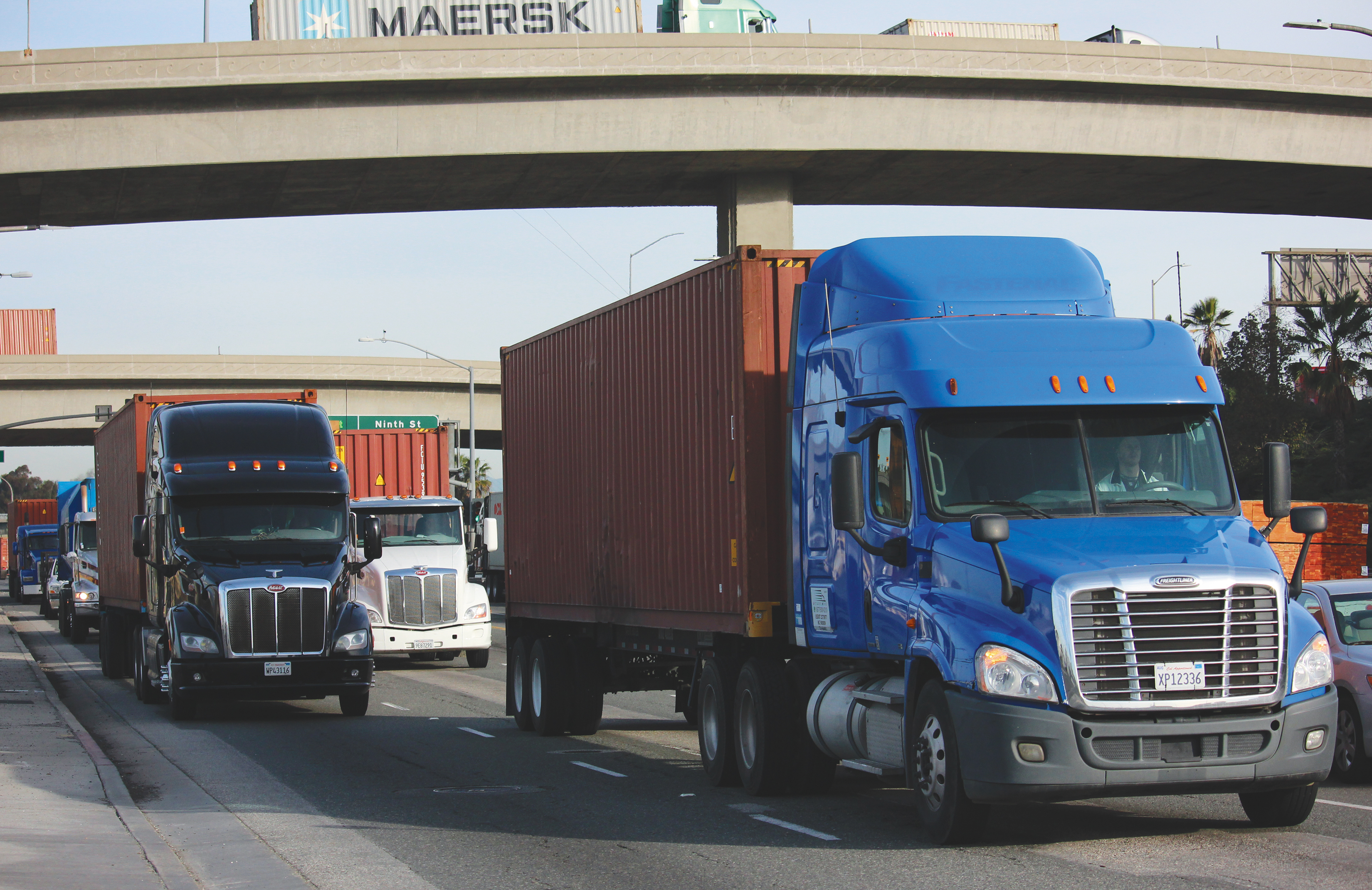Last year, 17.6 million twenty-foot equivalent cargo containers moved through the ports of Long Beach and Los Angeles combined, positioning them both firmly atop the list of the nation’s busiest ports. Every day, hundreds of trucks file through the ports’ gates. Reducing the traffic congestion and air pollution they create has been a major task for the port, its operators and vendors.
In 2005, the ports’ terminal operators signed the West Coast Marine Terminal Operator Agreement (WCMTOA) to create a program aimed at spreading truck traffic over two daily shifts in an effort to reduce congestion and pollution around the port complex. Over a decade later, in November 2018, the nonprofit in charge of administering the Off-Peak Program, PierPass, changed its fee schedule from a peak-pricing model to a flat fee of $31.52 per 20-foot container.

PierPass was set up to administer the collection and distribution of fees collected by the program. The nonprofit’s president and chief operating officer, John Cushing, said that before the Off-Peak Program was launched, 90% of containers were picked up and delivered during the daytime shift between 8 a.m. and 5 p.m. “That volume all compressed into that one shift was challenging the infrastructure,” Cushing noted. “So the objective was: find a solution to mitigate the traffic.” The Off-Peak Program offered reduced fees for cargo entering and exiting the port during a second shift, from 5 p.m. to 2 a.m., as an incentive for truckers to come to the terminal at night.
Cushing said the efforts to disperse traffic over two shifts were successful in reducing congestion. But in 2016, trucking companies and other stakeholders asked Pierpass and the signatories of WCMTOA to review the program. One area of concern was that trucks lining up just prior to off-peak hours to take advantage of lower fees, causing congestion and pollution. PierPass responded by changing the fee system from peak-pricing to a flat fee for both the daytime and evening shifts to prevent trucks from idling at terminal gates while they waited for lower-priced timeslots. This change was implemented in November 2018.
According to Cushing, drivers have continued to utilize both shifts equally, even after the pricing model designed to incentivize drivers to enter and exit the port at night was replaced by a flat fee.
Escalating trade tensions between the U.S. and China, the ports’ largest trade partner, caused a spike in cargo volumes ahead of anticipated tariff increases in January 2019 and a subsequent drop in the following months; Cushing said this dynamic has made it challenging to gauge the success of the new Off-Peak system at this point. Still, his take was positive overall. “Given that we got hit with the surge and then the big lull, we’re very impressed with how seamless the transition was,” Cushing said.
Weston LaBar, chief executive officer of the Harbor Trucking Association, a coalition of port-area intermodal carriers, reserved judgement on the new fee schedule for the same reason. “We were not operating under normal circumstances and because of that, it’s really unfair to try to categorize the effect of anything when you’re in a situation that’s so extraordinary,” LaBar said.
His organization has been supportive of the changes, he said, and will continue to work with WCMTOA members to support the success of the program. “It wasn’t 100% what we wanted, but it was pretty close,” LaBar said. “We want to continue to have dialogue with the marine terminal operators and the PierPass board to make sure that we’re not just resting on our laurels, but we continue to finetune and tweak the program.”
One of the major sticking points in the discussion between terminal operators and the logistics industry – which includes freight forwarders, customs brokers, trucking companies and other entities – have been the appointment systems used to coordinate the loading and unloading of cargo at the terminals. The increased cargo volumes moving through the port in late 2018 emphasized the need to modernize appointment systems, according to LaBar. “When you have a great surge in cargo, you need to make sure that you have dynamic, efficient appointment systems, and I think there was a lot of exposure to the fact that we could have better technology in the industry,” he explained.
The Harbor Trucking Association wants to leverage technology to improve the scheduling process for cargo transfers by directly accessing the terminal operators’ application programming interfaces (APIs). By tapping into APIs, trucking companies would be able to access appointment data directly, rather than going through a scheduling portal. “That allows for our members to use their operating systems as a portal, because they’ll be getting all of that information directly into the systems that they use to dispatch truck drivers,” LaBar said.
This two-way stream of data enables terminal operators to receive information on the location of a specific truck, allowing them to move appointments around if trucks arrive earlier or later than scheduled. “For us, that’s the ultimate end goal: to allow the systems to talk to each other and help do that advanced planning,” LaBar said. A more dynamic appointment system would increase efficiency, he explained, helping to reduce congestion and pollution. “I think as an industry, we’re headed in the right direction, but now is really the time to make sure that [we’re] investing in technology, we’re getting the best systems out there and we’re making sure that we’re leveraging the data aspect, so we get that seamless flow of cargo.”
